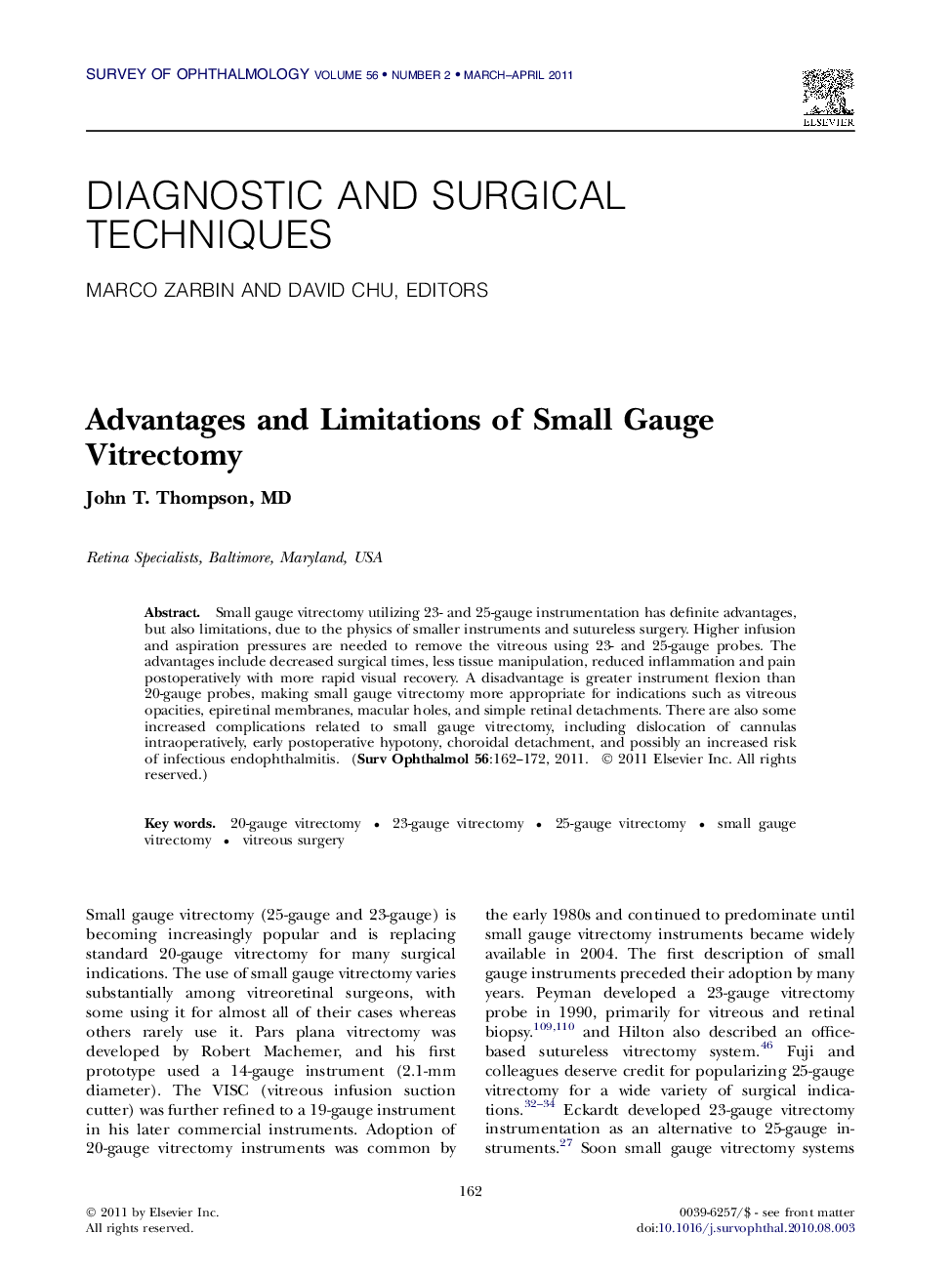| Article ID | Journal | Published Year | Pages | File Type |
|---|---|---|---|---|
| 4032711 | Survey of Ophthalmology | 2011 | 11 Pages |
Small gauge vitrectomy utilizing 23- and 25-gauge instrumentation has definite advantages, but also limitations, due to the physics of smaller instruments and sutureless surgery. Higher infusion and aspiration pressures are needed to remove the vitreous using 23- and 25-gauge probes. The advantages include decreased surgical times, less tissue manipulation, reduced inflammation and pain postoperatively with more rapid visual recovery. A disadvantage is greater instrument flexion than 20-gauge probes, making small gauge vitrectomy more appropriate for indications such as vitreous opacities, epiretinal membranes, macular holes, and simple retinal detachments. There are also some increased complications related to small gauge vitrectomy, including dislocation of cannulas intraoperatively, early postoperative hypotony, choroidal detachment, and possibly an increased risk of infectious endophthalmitis.
